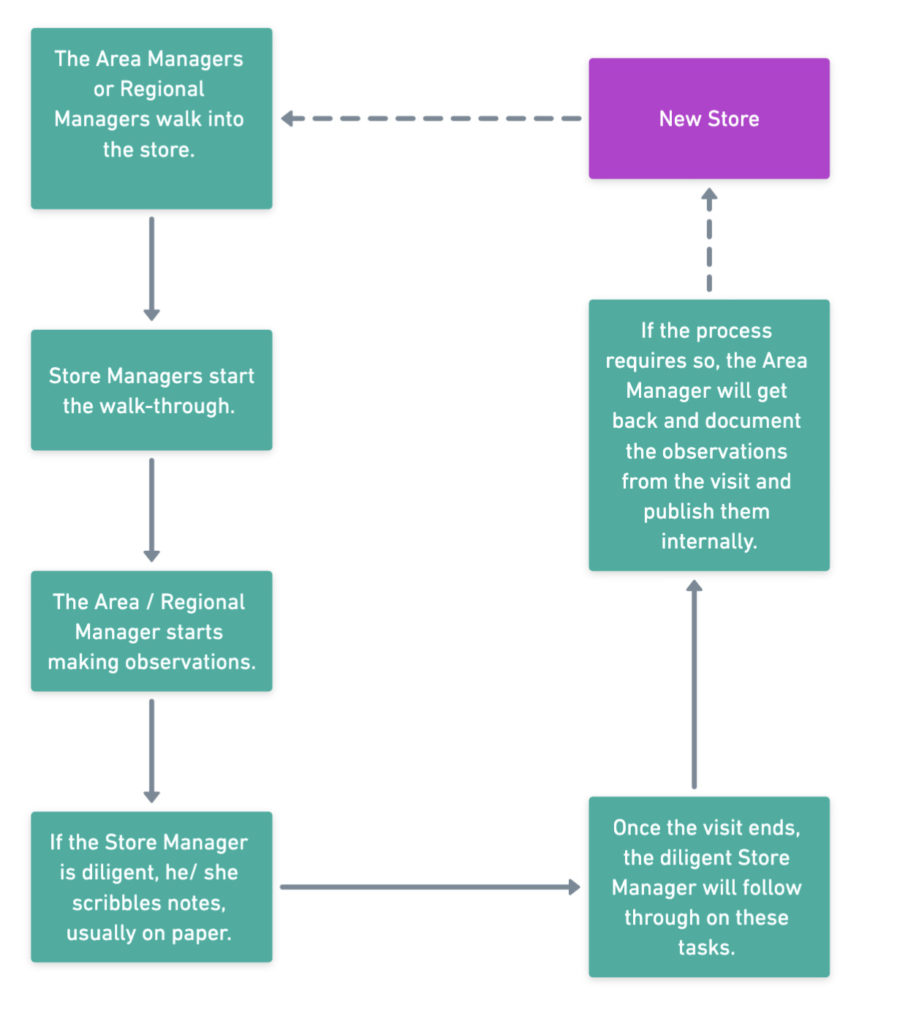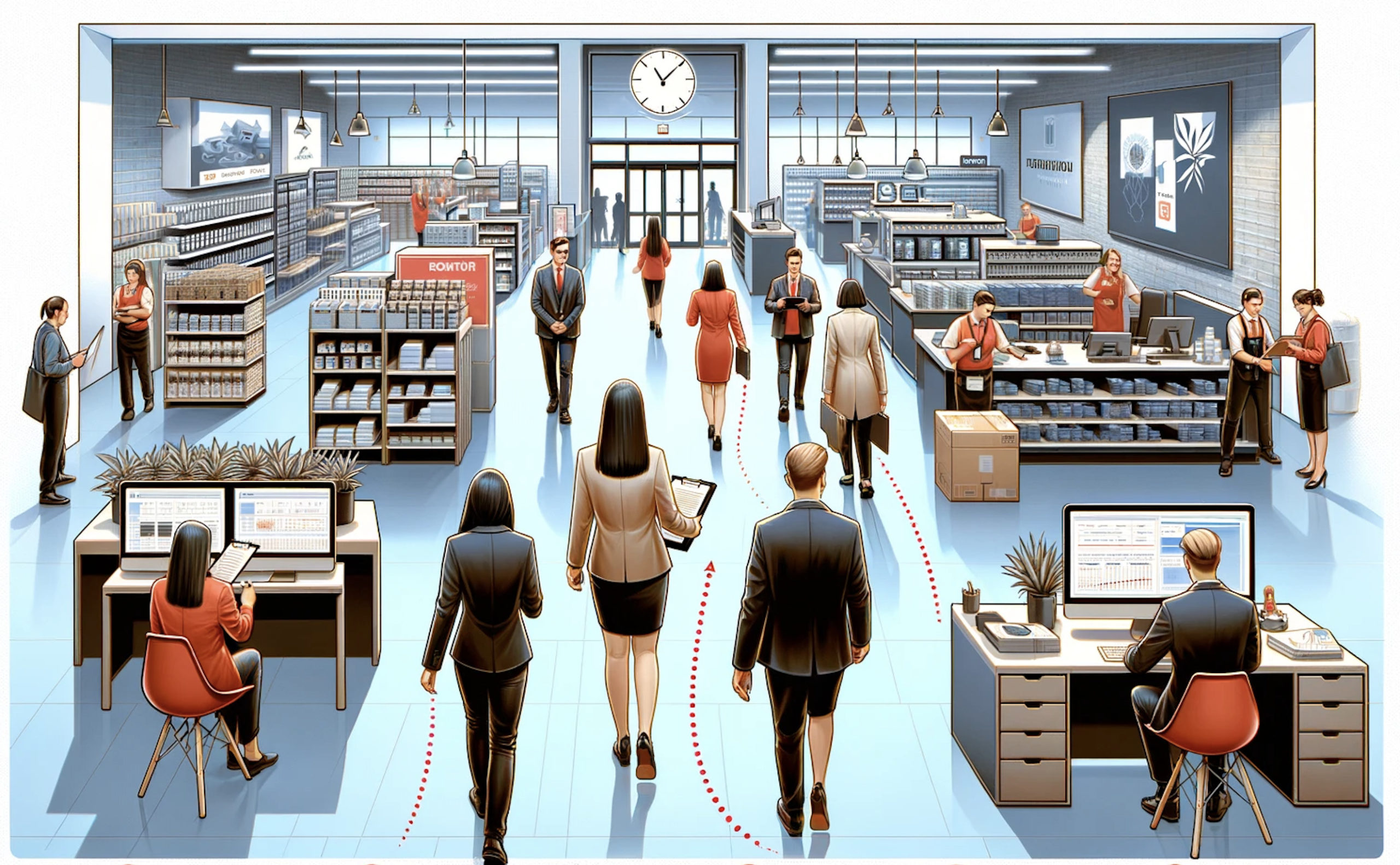This is Part 1 of 2 of our series on the Complete Guide to Store Visit Reports.
There’s a saying in the world of retail: you are as good as your worst store. You can’t control which stores your customers choose to walk into. Hence, ensuring every store meets standard compliance and provides exceptional customer experience becomes vital.
With retail coming back to life post-pandemic, some of the verticals and markets are growing at a never seen before rate. More footfall translates into more revenue and, eventually, more margins. And customer experience is at the forefront of it.
Customer experience in stores or outlets is the function of well-trained staff, a consistent store experience, and a seamless bridge between strategy from HQ and on-ground teams.
Hence, Store Visits are not mere tick-of-the-box exercises but essential for retail stores. By overlooking it, retailers are missing a huge opportunity and leaving money on the table.
The Current Store Visit Report
The Purpose
The purpose of store visit reports is simple – to help stores or outlets become consistent and better. A store visit helps in:
1. Quality Assurance and Standards Compliance: Visiting stores allows you to ensure that each location adheres to the company’s standards for quality, presentation, and customer service. You can directly observe if the stores are clean, well-organized, and maintaining the brand’s standards, which is essential for providing a consistent customer experience across all locations.
2. Employee Engagement and Knowledge Sharing: Face-to-face interactions with store employees during visits can boost morale and engagement. You can assess training needs, provide on-the-spot feedback, recognize employee achievements, and understand staff concerns, which can lead to improved employee satisfaction, performance, and retention.
3. Customer Experience and Feedback: You can directly observe the shopping experience from a customer’s perspective. This includes checking customer service quality, waiting times, and overall shopping convenience.
4. Operational Efficiency: Store visits allow you to identify operational challenges and bottlenecks that may not be apparent.
5. Strategic Insights: Being physically present in stores provides insights into market trends, buyer behavior, staff efficiency, and local customer preferences.
6. Sales and Merchandising: You can evaluate the effectiveness of merchandising strategies, promotional displays, and product placements. They can ensure that promotional activities are being executed as planned.
7. Building Relationships: Store visits help build stronger relationships between store teams and corporate leadership. This can foster a sense of belonging and commitment to the company’s goals among store employees, which is crucial for the long-term success of the retail operation.
Challenges with the Current Store Visit Reports
As an operations leader, you already know how a typical Store Visit happens:

1. The Area Managers or Regional Managers walk into the store.
2. Store Managers start the walk-through.
3. The Area / Regional Manager starts making observations.
4. If the Store Manager is diligent, he/ she scribbles notes, usually on paper.
5. Once the visit ends, the diligent Store Manager will follow through on these tasks.
6. If the process requires so, the Area Manager will get back and document the observations from the visit and publish them internally.
While it may seem easy, there are several underlying challenges with the current orchestration of store visits:
The ghost store visit report:
The Store Visit happened only on paper, and no one really visited the store. This situation might arise from procedural shortcuts, miscommunication, or a deliberate attempt to bypass actual inspection processes for various reasons. The implication is that the store, theoretically reviewed for compliance, operational efficiency, or other metrics, remains unchecked.
Inconsistency and lack of standardization:
Not all aspects of the store were reviewed during the visit. Without a standardized checklist or evaluation criteria, different aspects of the store’s operations may be inconsistently reviewed or entirely overlooked. This inconsistency can result in an incomplete understanding of the store’s overall performance and the areas that require improvement. It can lead to missed opportunities to enhance customer experience, operational efficiency, and compliance with company policies or legal regulations.
Lack of one place for all observations:
The Store Manager did not take notes, or if notes were taken, the context was forgotten by the time they could get back to the notes and plan action. Additionally, it could happen that the Area Manager did not take notes during the visit or did not document the observations during the visit. The visit report documented subsequently was not accurate.
Ineffective use of store visit time:
Area/Regional Managers spend more time on low-value admin tasks such as identifying what to review, filling forms, taking notes, or collecting data. The problem multiplies when there is no structured format and process. This also leaves them minimal time to engage, share knowledge and motivate the store staff.
Risk of subjectivity:
There’s a risk of subjectivity in what you observe and prioritize during the visits. Personal biases can influence the assessment of store performance, potentially overlooking critical issues or areas for improvement. Store visits are susceptible to the individual biases of the evaluators. Managers’ subjective views can influence which aspects of the store they focus on, which issues they identify as priorities, and how they assess the store’s overall performance
Actionable follow-up:
Identifying issues or areas for improvement during store visits is only the first step. The real challenge is ensuring that actionable plans are developed and implemented following the visits. Without effective follow-up, the benefits of these visits can be lost.
Store Visit history:
The lack of a documented history of previous store visits poses significant challenges for tracking progress and ensuring accountability. There is no history trail of earlier visits to ensure previously encountered issues were fixed.
Insight and analytics:
The operations leader does not have granular or even collective measures of store performance, let alone consistency across them. Without detailed insights and analytics, the HQ teams will always scramble for reactive measures for different stores and not proactively act on collective improvement.
These challenges are important to address as they have a significant business impact. These critical aspects of business impact can result in bad customer experiences, affect team morale, and eventually affect revenue and margins. Hence, improving store visits could mean a significant uplift in business metrics. Think about it: Better store visits, better data and insights, better area and store managers. Ultimately, better store performance, customer satisfaction, and better sales.
In the next post of this series, we will explore how to overcome these challenges and build a repeatable, objective Store Visit process.

